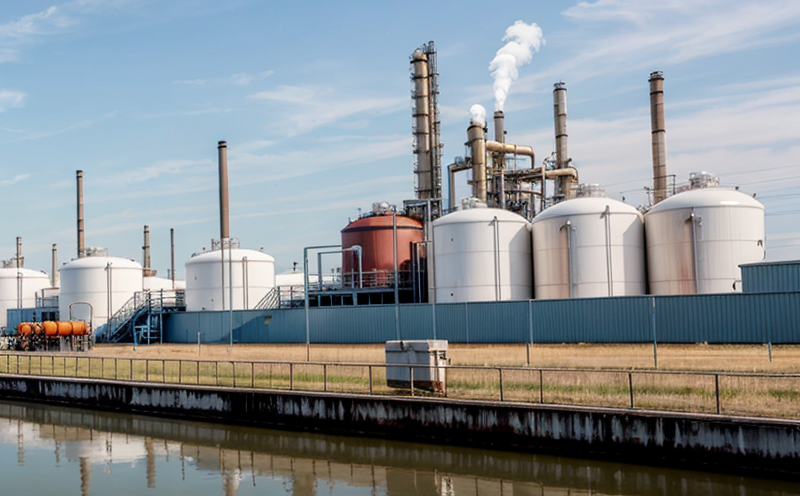AOAC 991 Hazardous Residue Safety Testing in Foods
The AOAC International method 991.04 is widely recognized globally as a robust and reliable protocol for quantifying hazardous residues such as heavy metals, pesticides, and industrial chemicals present in various food products. This testing procedure ensures that the food industry adheres to stringent safety standards set by regulatory bodies like the Food and Drug Administration (FDA), the European Union's Scientific Committee on Consumer Safety, and others.
The method involves a series of steps designed to accurately measure trace elements in food samples while minimizing interference from other components. The testing process typically includes sample preparation where food matrices are appropriately diluted or digested before analysis. This ensures that all residues present in the food can be quantified without bias.
One key aspect of AOAC 991 is its emphasis on precision and accuracy. By following this method, laboratories ensure consistent results across multiple samples, which is crucial for maintaining public health standards. The protocol also allows for the detection of low levels of contaminants that might otherwise go unnoticed, thereby preventing potential health risks associated with ingestion.
Another important feature of AOAC 991 is its adaptability to different types of food products. Whether it's fruits and vegetables, grains, dairy products, or processed foods, this method can be applied effectively across the board. Its versatility makes it an essential tool in the quality control toolkit of any food processing facility.
It’s worth noting that while AOAC 991 provides a standardized approach to hazardous residue testing, it is just one part of a comprehensive safety program. Regulatory compliance requires adherence to numerous other guidelines and practices. However, by incorporating AOAC 991 into their routine, companies demonstrate their commitment to producing safe food products.
The results from this test are critical inputs for decision-making processes within the industry. They inform policy changes, guide product development, and help ensure that all stakeholders—from farmers to consumers—are protected against harmful substances in our food supply.
In summary, AOAC 991 Hazardous Residue Safety Testing plays a vital role in safeguarding public health by identifying potentially dangerous contaminants early on. Its rigorous methodology coupled with widespread acceptance makes it an indispensable tool for maintaining high standards of quality and safety in the food industry.
Why It Matters
The importance of AOAC 991 cannot be overstated, especially given current global trends towards increased awareness about food safety and quality. With growing concerns over environmental pollution leading to contamination of agricultural lands, there is an urgent need for reliable methods to monitor these impurities in our food supply chains.
- Health Risks: Exposure to hazardous residues like heavy metals or certain pesticides can have severe health implications ranging from acute toxicity symptoms to chronic diseases over prolonged periods.
- Economic Impact: Recalls due to contamination events cost industries millions annually. Preventative measures such as rigorous testing help avoid costly disruptions and reputational damage.
- Consumer Trust: Transparent practices regarding food safety build consumer confidence, which is crucial in today’s competitive market environment.
Incorporating AOAC 991 into regular operations helps mitigate these risks by providing data that supports informed decisions about ingredient sourcing and manufacturing processes. This proactive approach not only protects consumers but also enhances brand reputation among health-conscious buyers who value transparency above all else.
International Acceptance and Recognition
The AOAC International standard has gained significant traction worldwide due to its stringent quality control measures and consistent results across diverse environments. Many countries have adopted this methodology as their preferred choice for hazardous residue analysis, recognizing the importance of harmonized standards in ensuring food safety.
For instance, several European Union directives mandate compliance with specific limits on certain contaminants based on AOAC 991 findings. Similarly, Asian nations like China and India have integrated elements from AOAC into their national standards to ensure uniformity and comparability between regions.
The widespread use of this method reflects its credibility among both governmental organizations and private sector entities alike. Regulatory authorities rely heavily on these test results when issuing certifications or imposing restrictions on particular products deemed unsafe for consumption.
Competitive Advantage and Market Impact
Adopting AOAC 991 can provide several competitive advantages for businesses operating within the food industry. Firstly, adherence to this standard signals a strong commitment to quality assurance and safety, enhancing brand reputation among consumers.
- Informed Decisions: Data obtained through AOAC testing informs strategic decisions related to ingredient sourcing and process optimization.
- Customer Satisfaction: Providing transparent information about product safety fosters trust between brands and their customers.
- Avoidance of Penalties: By avoiding non-compliance issues, companies can avoid hefty fines and legal challenges associated with regulatory breaches.
In terms of market impact, companies that invest in AOAC 991 testing are better positioned to navigate competitive landscapes. They position themselves as leaders in food safety, potentially opening doors to new markets or partnerships where stringent standards are required.
Moreover, staying ahead of regulatory changes and adopting leading-edge technologies like those supported by AOAC ensures long-term sustainability within the industry. As consumer demand for safer products continues to grow, compliance with such rigorous testing protocols will become increasingly important.





